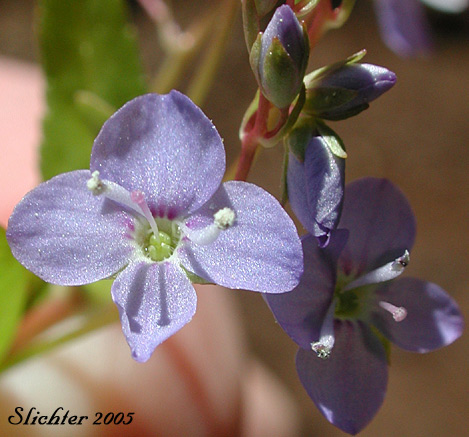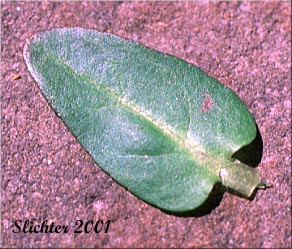
 Characteristics:
Characteristics:
American speedwell is a low-growing perennial with rhizomatous growth. The stems are more or less suculent and often tinged with red. The creeping stems are as long as 80 cm.
The leaves are all found on the stems. They are oval to lance-shaped, ranging from 0.5-5 cm long and 1.5-8cm wide. The blades taper to a rounded point and the margins are entire to finely toothed. The leaves attach to the main stem via short petioles.
The inflorescence is a raceme of a few to numerous flowers which emerge from the leaf axils at the tip of the stems. The flowers are bluish violet without white centers and are 7-100 mm wide on 5-10 mm pedicels (stalks). The corolla consists of 4 unequal lobes, the uppermost being the largest while the lowest is the smallest. The 2 stamens are twisted. The fruit capsules are heart-shaped to round with two lobes.
American speedwell is found along the shores of rivers, steams, and lakes, in roadside ditches, and in wet meadows. It typically inhabits water no deeper than 4 inches, and is common in slow-moving water or in shallow pools.
American speedwell is found over much of North America.
In the Columbia River Gorge it is found between the elevations of 0'-4000' across the whole length of the Gorge.